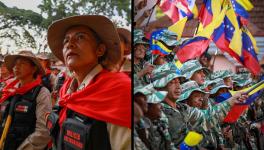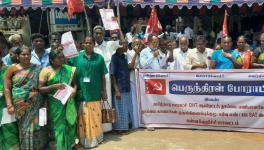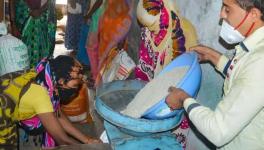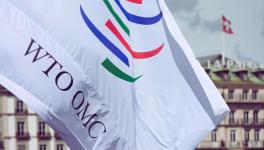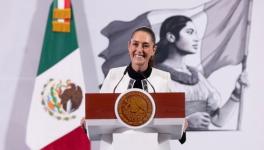How Mexico Lifted 13.4m Out of Poverty in 6 Years
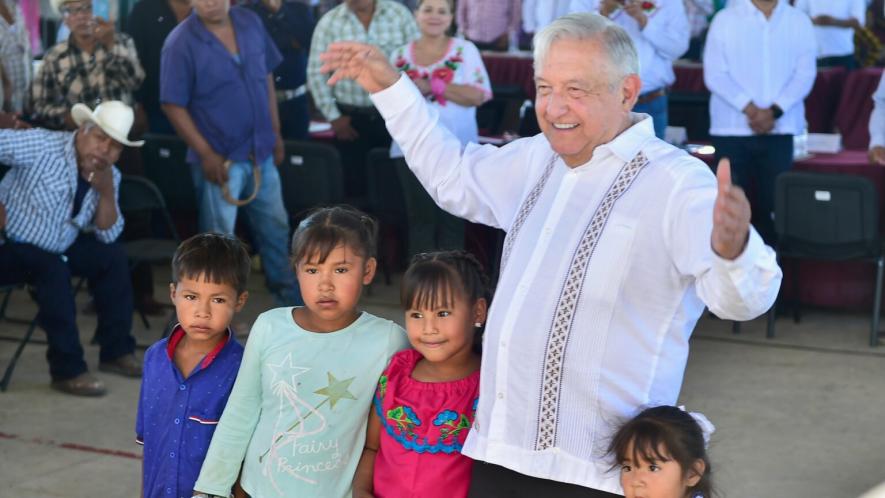
AMLO visits Huírivis in Nov. 2023. Photo: X
Mexico recorded a historic drop in poverty over the six-year presidency of Andrés Manuel López Obrador (AMLO). In six years – a period that included a global pandemic and a massive effort to overhaul 89 years of right-wing governance – the administration of AMLO and the Morena party saw 13.4 million Mexicans leave poverty behind, and an additional two million lifted from extreme poverty.
This figure refers to multidimensional poverty, which also considers access to services. When considering poverty only as far as it relates to salaries, 15.8 million Mexicans exited poverty during the six year administration of AMLO and Morena. Extreme poverty in the country is now at its lowest level in history.
The development is a historic achievement for the Morena government, despite the party being largely discredited by major English-speaking media.
Over a year ago, The Guardian reported that “AMLO promised to transform Mexico, but he leaves it much the same”. However, they have now walked back on that reporting, noting the historic poverty reduction of 13.4 million people.
The New York Times reported in 2022 that “Mexico’s leader says poverty is his priority. But his policies hurt the poor”.
The article criticized the government’s decision to overhaul “Prospera”, Mexico’s previous social welfare program, which was praised by The World Bank. Prospera, previously under the name Progresa, ran from 1997 to 2018.
While the program was part of Mexico’s recovery from the Mexican Peso Crisis, which included an IMF bailout, conditional on certain austerity policies and meeting free-trade agreement stipulations, it was largely unsuccessful in reducing poverty in Mexico.
In the 12 years leading up to AMLO’s six-year presidency, the poverty rate in Mexico only moved slightly from 42.9% to 41.9%. Now, after the sexenio of AMLO and Morena, the poverty rate stands at 29.6%.
How did the government reduce poverty?
While a defining characteristic of the Morena government until now has been a range of social programs, the majority of poverty reduction can be traced to raises in the minimum wage, which created overall increases in household income.
Between 70 and 73% of Mexico’s poverty reduction is owed to an increase in labor income.
In 2018, Mexico’s minimum daily wage was 88.36 pesos (USD 4.70) in most areas of the country, the lowest in Latin America. Now it’s 278.80 pesos per day (USD 14.9), a figure more than three times higher. Mexico maintains a higher minimum wage in some northern states near the US border, where the cost of living is even more competitive.
These changes represent an overall increase of 135% purchasing power, when considering inflation.
To illustrate the significance of these changes: Over AMLO’s six-year term (2018-2024), the amount that Mexican families spend per month accessing health services increased about 157 pesos, however, the minimum wage over that same period increased by 4,800 pesos per month.
Furthermore, it is now constitutionally decreed that the minimum wage must rise above the rate of inflation. By 2026 the government is aiming for the minimum wage to be 9450 pesos per month, or 314.60 pesos per day.
Sheinbaum has stated that her aims regarding minimum wage relate to how many baskets of basic goods can be purchased. Her aim by 2026 is that the minimum wage will be worth two baskets of basic goods by 2026, and worth two-and-a-half baskets of basic goods by 2030.
A common critique of Mexico’s minimum wage spending is that a large percentage of Mexicans still work in the informal economy, and therefore don’t benefit from minimum wage raises. It is true that most Mexicans work in the informal economy, based on the start of 2025, 54.3% of Mexicans work in the informal economy. This is only a modest decrease from the 56.5% rate of informal employment that was registered at the end of 2018, when AMLO came to power.
However, boosting the purchasing power of families benefits the informal economy as well. But the bigger challenge for Claudia Sheinbaum and the Morena government going forward is moving more workers into the formal economy.
Efforts have been made towards this goal, such as a new labor reform that offers workers rights to those employed through digital applications, such as Uber or Didi. The government registered 1.2 million new formal workers after this reform.
The government also runs a social program, “Youth Building the Future”, which offers a monthly salary and medical insurance to people between the ages 18 and 29 that aren’t working or studying, and places them into businesses and workplaces for work experience and training. The program is currently being delivered to 2.3 million Mexicans, and 62% of program graduates are finding permanent work.
However, until now, the government hasn’t had major success in formalizing the economy.
Social programs in general have also contributed greatly to Mexico’s poverty reduction. Other programs include the universal pensions for all men over 65 years old and women over 60 years old, house-to-house free healthcare for elderly and vulnerable citizens, universal scholarships for all public school students, cash transfers to people with disabilities, cash transfers to working single mothers, transfers to farmers for planting trees, financial credit to medium and small agricultural producers, and more.
The Morena government has been constitutionally entrenching these social programs to ensure they continue into the future, and they are consistently mentioned by voters as a key reason for supporting Morena.
A remaining challenge for the Sheinbaum administration is to ensure these programs can reach Mexico’s most vulnerable citizens, who often live in rural areas with little access to services.
Reducing inequality
Mexico’s reduction in poverty hasn’t come at a time of significant economic growth. Economic growth has been modest since 2018, which included a massive pandemic-induced 8.35% drop in GDP in 2020. Rather than poverty reduction stemming from economic growth, it has been achieved through a redistribution of resources.
While Mexico remains a highly unequal country, where the 10% of richest households earn 14 times that of the poorest 10%, this figure used to be the richest earning 21 times the poorest, as recently as 2016. During the administration of Felipe Calderon, between 2006 and 2012, this figure was a staggering 35 times disparity between the richest and poorest 10% of households.
Between 2016 and 2024, all Mexican households saw an increase in their distribution of national income, except the richest 10%, who saw a 6.1% decrease, demonstrating the redistribution of income.
While tax collection has been increasing, many Mexican political commentators believe a fiscal reform, that places more taxes on the rich, will be required to greatly shift the inequality present in Mexico.
Despite some advances, poverty also remains exceptionally higher in the south of Mexico when compared to the north, which is another key problem that Sheinbaum and Morena will have to tackle.
The current climate for Mexico
The government of Morena remains in a very strong position, with Sheinbaum’s approval ratings generally hovering between 70% and 80%. The economy continues growing and the country is receiving record direct foreign investment.
However, US tariffs are providing a constant threat to the economy, with the potential to provoke a major recession, and the threat of tariffs alone leading to uncertainty for investment. Mexico has been shoring up relations with countries such as Brazil and Canada, but tariffs still represent a major risk to Mexico, whose economy is largely entwined with the US.
By far the biggest threat to Mexico remains that of unilateral military action, with the Trump administration creating fears of military intervention in Mexico. The US claims this would be to combat drug cartels.
However, as Claudia Sheinbaum recently stated, using US data, 80% of fentanyl traffickers are from the US and 74% of guns in Mexico come from the US.
Tallis Boerne Marcus is an Australian journalist currently based in Mexico City.
Courtesy: Peoples Dispatch
Get the latest reports & analysis with people's perspective on Protests, movements & deep analytical videos, discussions of the current affairs in your Telegram app. Subscribe to NewsClick's Telegram channel & get Real-Time updates on stories, as they get published on our website.









